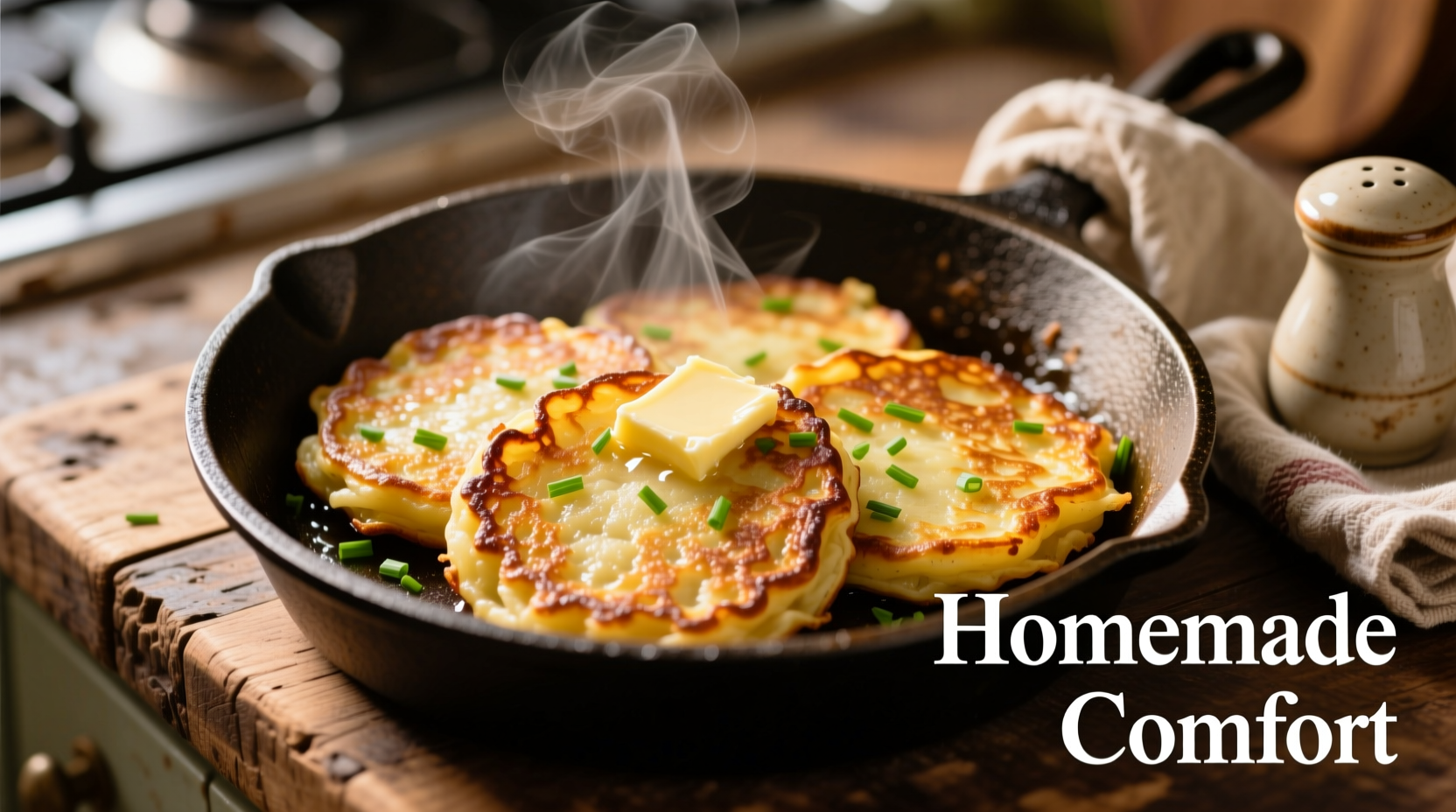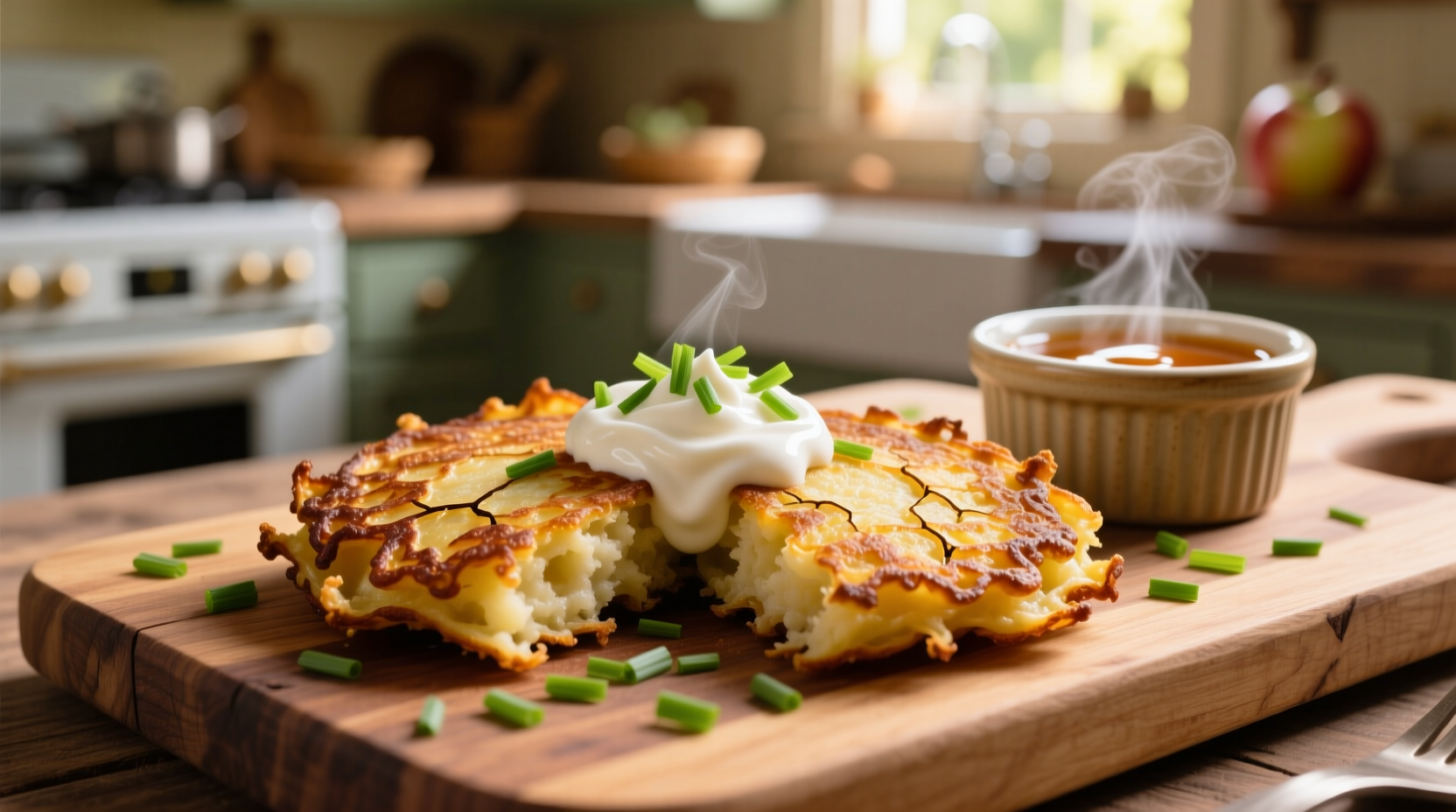Nothing beats the satisfying crunch of perfectly cooked mashed potato pancakes with a tender, fluffy interior. This versatile recipe solves two common kitchen dilemmas: what to do with leftover mashed potatoes and how to create a hearty meal that works for breakfast, brunch, or dinner. Based on culinary traditions dating back to Eastern European placki z ziemniakow, these pancakes have evolved into a global comfort food favorite.
The Science Behind Perfect Potato Pancakes
Understanding potato chemistry makes all the difference. When potatoes cook, their starch granules absorb water and swell—a process called gelatinization. According to food science research from the University of Illinois Extension, maintaining the right moisture balance (65-70% water content) creates the ideal texture. Too much liquid causes pancakes to fall apart; too little prevents proper browning.
| Potato Type | Starch Content | Best For Pancakes? |
|---|---|---|
| Russet | High (20-22%) | ✓ Excellent crispness |
| Yukon Gold | Medium (16-18%) | ✓ Balanced texture |
| Red Potatoes | Low (14-16%) | ✗ Better for salads |
Essential Ingredients Checklist
Use these precise measurements for consistent results every time. This recipe makes 8-10 medium pancakes:
- 2 cups leftover mashed potatoes (cooled)
- 1 large egg (or flax egg for vegan option)
- 3 tablespoons all-purpose flour (or chickpea flour for gluten-free)
- 1 small onion, finely grated
- 1 teaspoon salt
- ½ teaspoon black pepper
- 2 tablespoons fresh parsley, chopped
- 3-4 tablespoons vegetable oil for frying
Step-by-Step Cooking Process
Preparation Phase
Squeeze excess moisture from grated onions using a clean kitchen towel—this prevents soggy pancakes. Combine all ingredients in a large bowl, mixing just until incorporated. Overmixing develops gluten, leading to tough pancakes. Let the batter rest for 10 minutes to allow flour to hydrate fully.
Frying Technique
Heat oil in a cast-iron skillet to 350°F (175°C). Use enough oil to coat the bottom generously—about ¼ inch deep. Drop ⅓-cup portions of batter into the hot oil, flattening gently with a spatula to ½-inch thickness. Fry 3-4 minutes per side until deep golden brown. The USDA Food Safety and Inspection Service confirms that properly cooked potato products reach safe internal temperatures above 160°F (71°C).

Avoid These Common Mistakes
Even experienced cooks make these critical errors:
- Using warm mashed potatoes—always cool leftovers completely first
- Skipping the onion moisture removal—excess water causes splattering and uneven cooking
- Crowding the pan—maintain space between pancakes for proper heat circulation
- Flipping too early—wait until edges appear crisp and golden before turning
Variation Ideas for Different Diets
Customize this base recipe for special dietary needs:
- Gluten-free: Substitute chickpea flour or rice flour
- Vegan: Replace egg with flax egg (1 tbsp ground flax + 3 tbsp water)
- Herb-infused: Add 1 tbsp chopped dill or chives to the batter
- Protein boost: Mix in ¼ cup crumbled bacon or smoked salmon
Serving and Storage Tips
Serve immediately with sour cream and applesauce for traditional Eastern European style, or try Greek yogurt with chive oil for a modern twist. Leftovers keep well for 3 days in the refrigerator. Reheat in a 400°F (200°C) oven for 8-10 minutes to restore crispness—never use the microwave, which makes them soggy.
Why This Recipe Works Better
Unlike traditional latkes that require shredding raw potatoes, this method uses pre-cooked potatoes for consistent texture and reduced preparation time. The batter's precise moisture balance creates pancakes that hold together during cooking while achieving maximum crispness. Professional chefs at the Culinary Institute of America note that repurposing leftovers in this way reduces food waste by up to 30% in home kitchens.











 浙公网安备
33010002000092号
浙公网安备
33010002000092号 浙B2-20120091-4
浙B2-20120091-4